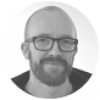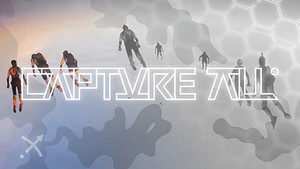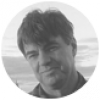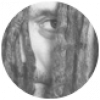Today we documented Aram Bartholl’s workshop «Here, but Invisible» and the «The Darknet – From Memes to Onionland. An Exploration» exhibition, featuring !Mediengruppe Bitnik’s Random Darknet Shopper.
«The Darknet – From Memes to Onionland. An Exploration»
There is a parallel world beneath the surface of the Internet: the Darknet is an encrypted, invisible network that cannot be accessed by conventional browsers or search engines but is nevertheless used by millions. This digital territory is the impulse for cooperation between the artist collective !Mediengruppe Bitnik (Carmen Weisskopf and Domagoj Smoljo), the project :digital brainstorming from Migros-Kulturprozent and Kunst Halle Sankt Gallen. Forms of organisation, structures and communications systems which penetrate everyday life but which are largely unknown to the public will be examined with the help of other artists, theoreticians and hackers. The exhibition «The Darknet – From Memes to Onionland. An Exploration» will open Kunst Halle Sankt Gallen for interdisciplinary expeditions and encompass themes such as copyright, privacy, illegality and resistance.
Public awareness of the Darknet, also called Deep Web or Onionland, has increased as a result of recent events. It has a bad reputation: drugs, weapons, pornography, stolen data and forged documents can be bought there. However, Edward Snowden’s revelations seem to have shifted this one-sided perception. The Darknet is an apparently power-free space with potential that is still little-known and even less used. The participants want to take this factor seriously as critical individuals and articulate its non-transparent mechanisms and systems. Some artistic contributions directly access data and visual worlds from the Deep Web. For example, !Mediengruppe Bitnik transports goods and games from this Internet subculture into the art space while Eva and Franco Mattes present reactions to a video from Onionland. Cory Arcangel’s work remains concealed from exhibition visitors. He is concerned with the
visibility of the Kunst Halle on the World Wide Web. Other artists deal with Internet phenomena that also exist on the Surface Web and which are located in the tension-filled area between anonymity and commerce: Robert Sakrowski is curating YouTube films on the history of Anonymous, Valentina Tanni is making available her archive of memes and Simon Denny will provoke questions about business models, income and property in times of global data interchange. In contrast, Heath Bunting examines
data storage in relation to identities. These are constructed by means of shopping cards, credit cards or mobile phones. The artist thus also broaches the subject of class systems. Conversely, an identity can also be deleted – as Seth Price demonstrates with How to disappear in America.
With this show the Kunst Halle Sankt Gallen links the visible and the invisible which are interlocked – From Memes to Onionland. Aware of the uncertainties in this regard an approach from multiple perspectives is intended. It is an attempt to grasp this extremely controversial phenomenon of our times with artistic contributions, archive material, workshops and discussions. The format of the exhibition gives visitors access to the digital underground and questions familiar notions – Kunst Halle Sankt
Gallen can now also be found in Onionland at http://vtw7g7wcdsgxq4ru.onion/
In cooperation with !Mediengruppe Bitnik and :digital brainstorming
With contributions from: Anonymous, Cory Arcangel,!Mediengruppe Bitnik, Aram Bartholl, Heath Bunting, Simon Denny, Eva and Franco Mattes, Seth Price, Robert Sakrowski, Hito Steyerl, Valentina Tanni
The Random Darknet Shopper
The Random Darknet Shopper is an automated online shopping bot which we provide with a budget of $100 in Bitcoins per week. It goes on a weekly shopping spree in the deep web where it randomly choses and purchases one item and has it mailed to us. The items are exhibited in «The Darknet» at Kunsthalle St. Gallen, each new object adding to a landscape of traded goods from the Darknet.
The Random Darknet Shopper is a live Mail Art piece, an exploration of the deep web via the goods traded there. It directly connects the Darknet with the art space. The items bought in the Darknet by the Random Shopper are commonly contraband and range from drugs to counterfeits, ebooks, software, electronics and services including security and hacking services.
All these items share as a common characteristic the most interesting aspects of hidden online markets: They exemplify how the internet in general and the darknets most notably are helping to increasingly blur the lines of national legal dictates: What is legally produced and sold in one country is not necessarily legal in another [1]. Being global, these markets connect diverse jurisdictions, questioning the notions of legality and producing a vast greyzone of goods available virtually everywhere.
Furthermore, the goods traded in the darkweb show the manner in which trust is successfully established in anonymous networks. Although the hidden market is based on the anonymity of its participants, rating systems and anonymous message boards ensure a certain level of trust. The ability to rate your dealer is radically changing the way people are buying drugs and other controlled items. Buying contaband online means having access to a reliable rating system, while at the same time staying anonymous, all from the comforts of your home.
By randomizing our consumerism, we are guaranteed a wide selection of goods from the over 16’000 articles listed on Agora market place. We want to see what goods come out of the deepweb, where they are sent from, how (and whether) they arrive. We want to find out how the goods are packaged to be concealed from the postal services.
Agora
The random darknet shopper shops at Agora, a marketplace in a part of the Darknet called Onionland. The Darknet and Onionland are hidden niches of the Internet which are not discoverable by search engines and which are accessible only for visitors who cloak themselves by using the anonymous Tor Browser. In the Darknet, people meet, chat, trade. Activists and dissidents use the cloaking mechanisms of the Tor Browser to cover their tracks.
Agora launched in 2013 and has become the largest and most popular online hidden marketplace since the take-down of Silkroad in October 2013. Its customers are able to buy or sell virtually anything, including illicit goods like drugs, contraband or weapons.
The Agora Market uses the anonymous cryptocurrency bitcoin to pay for transactions. To protect customer privacy, Agora uses anonymous courier services and camouflage for shipping regulated and prohibited items. Site transactions, despite anonymity, are surprisingly reliable. Like in similar surfaceweb market places, all transactions can be rated, allowing customers an assessment of the seller and his or her goods.
There are already more than 16,100 listings on Agora, according to a new report from Digital Citizens Alliance, a U.S. crime research group [2]. That popularity is enough to make Agora more popular than Silk Road 2.0, the black market that sprouted when the FBI closed down the original incarnation in October 2013.
The Random Darknet Shopper is a temporary exploration of the Darknet through the greyzones of hidden online markets. We regard it as crucial that art must inevitabily expand to include new formats and subject matters if it is to stay relevant. That is why we consider the Darknet to be a valid subject matter for art because not only the Internet but also the Darknets are changing the fundamentals in which societies work. How does building trust relationships work in a global market that is based on the anonymity of its participants? How do we maintain notions of legality and illegality when these markets
connect diverse jurisdictions with differing concepts of what is lawful. How do we as societies deal with anonymity online while offline identifiability, trackability and surveillability become the norm?
Viewed under Swiss art laws
The Swiss art law expert, Bruno Glaus, also considers the work to be legitimate and legal under criminal law. In his book “Kunst- und Kulturrecht” (Art and Culture Law) to be published in 2015, he outlines the preconditions that justify a violation of law in an art work.
In the Swiss constitution freedom of art is explicitly referenced. This requires judges to carefully balance interests between the interests of free art production and an exceptional breach of law [3]. According to Bruno Glaus, the preconditions that justify a violation of law in an art work are a plausible interest of scientific, artistic or informational nature. Also the infringement should be comprehensible and described in a written statement or concept. The breach of law should be temporary and the means used should be
appropriate [4]. Additionally, in accordance with Swiss law, the prosecuting authorities can refrain from prosecuting due to minor fault [5].
[1] See for example how eBay und Paypal, two US-american companies, restrict certain items on European eBay/Paypal sites because of trade restrictions in US law. They do this for example for Cuban goods where by doing this, they override European laws. See German Wikipedia: “Beim Handel mit Waren aus Kuba gilt nach USRecht, dass eBay Deutschland – ebenso wie z.B. eBay Österreich und eBay Schweiz – als Tochterunternehmen eines US amerikanischen Konzerns „denselben Handelsbeschränkungen unterliegt wie die Muttergesellschaft“. Folgerung von eBay: „Daher dürfen grundsätzlich nur solche kubanischen Artikel bei eBay angeboten werden, die ‚informativ‘ oder ‚lizenziert‘ sind oder die vor dem Inkrafttreten des USHandelsembargos gegen Kuba am 8. Juli 1963 auf den Markt gekommen sind.“ Daher ist es zum Beispiel nicht möglich, kubanische Zigarren auf eBay anzubieten.
Nach Expertenansicht verstösst diese Handhabung, die auch für die eBay-Tochter Paypal angewendet wird, jedoch gegen die Verordnung (EG) Nr. 2271/96, die sogenannte EU Blocking Regulation. Diese verbietet es europäischen Unternehmen, also auch europäischen Tochterunternehmen außereuropäischer Muttergesellschaften ausdrücklich, die US-Sanktionsbestimmungen gegen Kuba und verschiedene andere Länder zu befolgen. “ Wikipedia (in German): http://de.wikipedia.org/wiki/EBay#Handelsbeschr.C3.A4nkungen_nach_US-Recht
Also (in German): http://www.welt.de/print/die_welt/wirtschaft/article13516280/Die-Bank-gewinnt.html
[2] Report by Digital Citizens Alliance, published 22.08.2014: http://www.digitalcitizensalliance.org/cac/alliance/content.aspx?page=Darknet
[3] “Die ausdrückliche Erwähnung der Kunstfreiheit in der Verfassung führt dazu, dass Richter im Einzelfall vermehrt eine Güterabwägung vornehmen und entscheiden müssen, ob das Interesse an künstlerischer freier Produktion ausnahmsweise die Rechtsverletzung zu rechtfertigen vermag .” From the manuscript of “Kunst- und Kulturrecht”, Bruno Glaus et. al., 2015
[4] “Grundvoraussetzung für die Rechtfertigung einer Rechtsverletzung im künstlerischen Kontext ist ein nachvollziehbares Informations, Kunst- oder Wissenschaftsinteresse. Der Eingriff sollte so weit als möglich erkennbar sein oder jedenfalls im Konzept nachvollziehbar erläutert und als begrenzter „Laborversuch“ deklariert werden. Zweck kann ja beispielsweise eine Untersuchung der durch ein Projekt ausgelösten Proteste sein (vergleichbar den Blind- und Doppelblindversuchen bei Medikamenten). Meist wird ein – gewöhnlicherweise widerrechtlicher – Eingriff, nur für eine beschränkte Zeit durch ein überwiegendes Kunstinteresse gerechtfertigt werden können (z.B. Aktionskunst, Einsperren eines Tieres, Belästigung von Personen auf der Strasse durch Theatermacher, Ausstellen von illegalen Gegenständen usw.). Die zum Zweck eingesetzten Mittel müssen notwendig, verhältnismässig und zumutbar sein (dies in Analogie zu den Datenschutzgrundsätzen).” From the manuscript of “Kunst-und Kulturrecht”, Bruno Glaus et. al., 2015 [5] “Unter strafrechtlichen Aspekten ist folgendes zu berücksichtigen: Die Strafbehörden haben gestützt auf Art.52 StGB die Möglichkeit (und die Pflicht) von einer Strafverfolgung oder einer Bestrafung abzusehen, „wenn Schuld und Tatfolgen“ gering sind (beschränktes Opportunitätsprinzip). Insbesondere bei der Schuldfrage muss das Interesse an freier künstlerischer Entfaltung berücksichtigt werden.” From the manuscript of “Kunst- und Kulturrecht”, Bruno Glaus et. al., 2015






